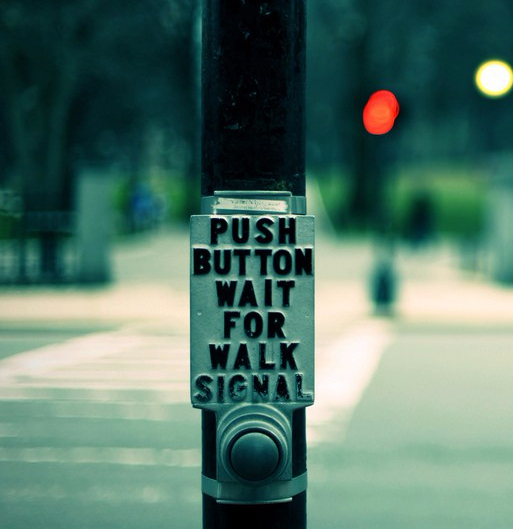15
Feedback as a Success Strategy
Helen Bajorek-MacDonald and Susan Hyndman
By Helen Bajorek-MacDonald (Faculty) and Susan Hyndman (Coordinator/Faculty)
Pre-Health Sciences Pathway to Certificates and Diplomas Program, School of General Arts and Sciences. Fleming College, Peterborough, Ontario (June 2017)
“I told my doctor that I broke my arm in two places.”
“What did he do?”
“He told me to stay out of those places!”
At Fleming College, we strive for a bit better feedback than this doctor gives. How often do faculty provide feedback on student work, only to find that a student continues to repeat the same errors or fall into the same pitfalls whether in writing, study habits, or skill application? Or worse, simply look at the grade, then pitch their work into the recycling bin?!
How might we better encourage our students to accept feedback not as a static representation through a ‘grade’, but as an evolving conversation between instructor and student about the student’s work and ways in which a student might advance their skills – over time?
These were among the questions we asked ourselves on the Pre-Health Science (College pathway) teaching team at Fleming College, working with students in a one-year college preparatory program that helps students prepare for a range of health care pathway programs, such as: paramedic, biotechnology, nursing, massage therapy, etc.
Our students weren’t doing ‘badly’. But, we wanted to raise the levels of student success and student retention. We also wanted to make sure that the learning, across and through the curriculum, was meaningful in ways that students could make connections between and among their varied courses.
One of the areas we targeted was feedback.
Our discussions began with more questions than answers: How might we engage our students with dynamic feedback that they would use to raise their success rates, as well as their skill sets? What might we do to encourage student awareness of the benefits of reading feedback? How might we better encourage our students to commit to the work of applying feedback? What do students need/want from our feedback?
All of this seemed quite daunting and we wondered: was there an approach where our students could learn to increase their feedback receptor skills (and commitment) and feedback implementation skills, while we could concurrently learn from them what we ought to do better?
Now what?
With the support of the teaching team I developed a Feedback Assignment within our Issues in Health Sciences course that asked students to choose one graded assignment – from any of their program courses – to review and to reflect upon, following a series of guided prompts and questions. Using our program map, where due dates are outlined, we determined that every student in our program would have received at least one piece of comprehensive and specific feedback from their instructors by the end of Week 4 in our 15-week semester.
Before students were given the assignment, they attended a ‘What is Feedback’ seminar during which we asked students to think about the many facets of feedback. More specifically we wanted to guide students to think about these concepts:
- the purpose of feedback in various settings, such as educational, workplace, in personal lives, etc.
- characteristics of effective feedback; e.g., purposful, timely, specific, etc.;
- types of feedback, such as verbal, non-verbal, written, and recognizing types of feedback that are subtle, such as silence [non-response];
- how to offer feedback; what is needed when giving feedback (accountability), and the need to balance fairness in one’s criticism with sensitivity;
- how to use feedback, including implementing processes to confirm and adapt, as needed;
- how feedback is offered through the program; e.g., feedback from prep guides and prep activities, answer keys, embedded consultations with instructors, help sessions, feedback notes on assignments – and what to do with it!
The first iteration of the assignment was distributed as a fairly traditional assignment. Students were asked to reflect on the feedback given on one graded assignment – from any course within the program – and to respond to some prompts that attempted to help them identify the strengths of feedback given, how they use feedback and provide them with the opportunity to share effective feedback with faculty.
Some sample student comments here:
- provide more detail or even the correct answer to help a student ‘fix’ the problem; e.g., up the game with answer keys
- be specific; e.g., what is meant by ‘confusing’? what does a question mark mean???
- feedback should be timely (a one-week turnaround is generally preferred)
- write more on the assignment, versus using a rubric
- no red ink!
- point out strengths (e., students like a pat-on-the-back)
We collected the data from the students and discussed the feedback (just as we had advised our students to do!).
From the feedback review, as a program team, we began to make changes in the ways in which we give feedback. For instance, many on the team no longer own a red pen and have embraced sassy purple, sky blue, cheeky peach and other funky colours to write feedback, whether on paper or digitally. More faculty began posting very detailed answer keys and notes pages for student reference.
In response to feedback gathered over several semesters, the Feedback Assignment evolved from a formal written assignment with a rubric that assessed for composition (ideas, content, organization) and writing (style, language, grammar, mechanics, etc.), to an in-class activity broken into several parts: written reflection through responses to prompts, group discussion, self-assessment.
The idea behind this significant change was to acknowlede the ways in which multiple learners learn best through various modes, including collaborative learning, support through group learning, and having an opportunity to put into practice the principles of feedback learned through self-assessment.
The most recent iteration of the assignment is attached: HLTH 273 Feedback Assignment_FA 2016
The process helps students think more specifically about the ways in which they can effectively receive and use feedback as an academic success and career readiness strategy. And we continue to signal to our students that we welcome their feedback about ways in which we might better support their learning, as each year we discuss the data that the students provide in their Feedback Assignment.
If our students and their instructors are going to avoid breaking their arms in the same places, they need to discover – clearly – how to stay out of those places.

Feature Image: “The Blades, Airbourne, Eastbourne, August 2013” flickr photo by vic_burton https://flickr.com/photos/vicki_burton/9584334822 shared under a Creative Commons (BY-SA) license
image credit: “Push Button, Wait.” flickr photo by Fey Ilyas https://flickr.com/photos/renneville/3445998507 shared under a Creative Commons (BY-SA) license



